The Vikings honored several gods and goddesses, each responsible for varied areas of life. They have two pantheons or tribes, the Aesir and the Vanir, constantly interacting as allies or enemies. Most of the gods and goddesses came from the Aesir tribe, while a few deities from the Vanir tribe became honorary members of the Aesir.
Here are some of the most famous Viking gods and goddesses.
Odin
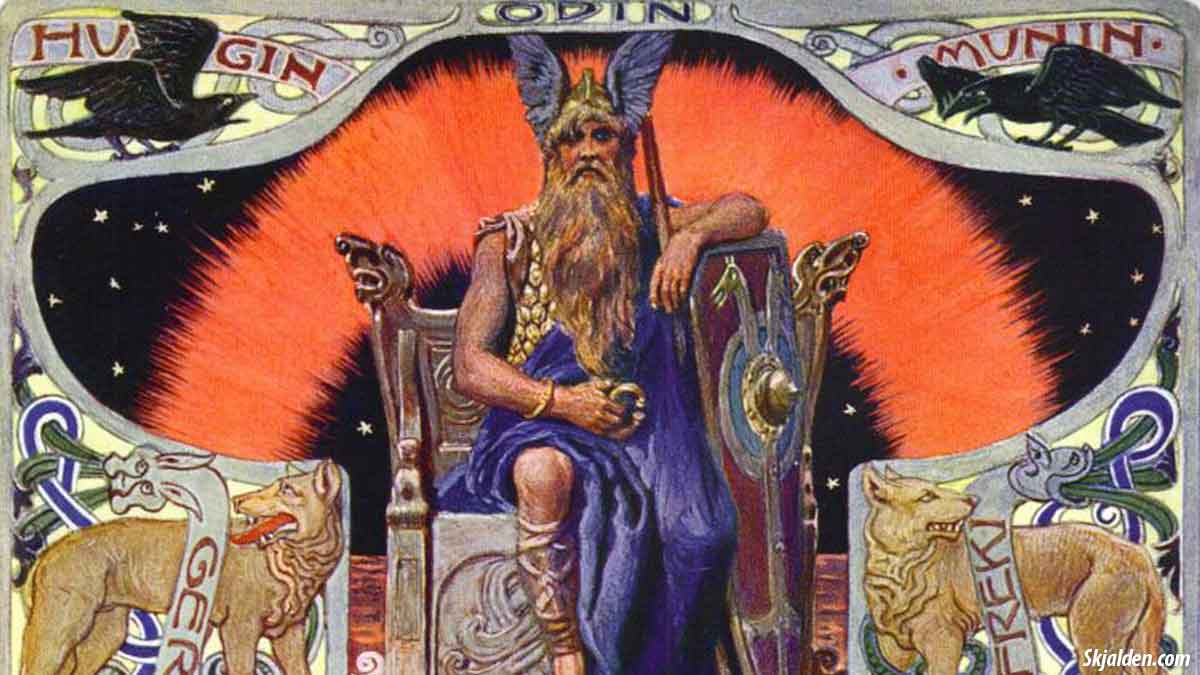
Odin was the most revered of the Norse gods and the king of Aesir, the tribe of gods. He was associated with several aspects, from wisdom to healing, royalty, death, frenzy, and sorcery. Odin was the equivalent of Mercury, a Roman god.
In many portrayals, they showed Odin as a haggard wanderer. Despite his royal status as Asgard’s ruler, he was supposed to be a relentless seeker of knowledge. One of the grandsons of Buri, Odin often sought knowledge accompanied by the Valkyries, two wolves, and two ravens. He was a god of war and the god of magic and poetry.
One of his famous deeds was sacrificing one of his eyes to see the cosmos. He hung from Yggdrasil, the World Tree, for nine days and nine nights to learn the runic alphabet and unlock various mysteries. However, Odin was easy to provoke, which led to wars and conflicts.
Frigg

Frigg, who was of exceptional beauty and an embodiment of fate, fertility, motherhood, household, and love, was Odin’s wife and the Aesir’s Queen. She was the only goddess who was able to sit next to her husband. Likewise, she was a protective mother who would go to any lengths to shield her children from any sign of danger. Her sons were Baldr, Hodor, and Hermod, with Baldr as her favorite. She took an oath from the elements, poisons, weapons, and beasts, so they would not injure her sons. However, Loki, the deceitful god, tricked her, which led to Baldr’s death.
Frigg was a powerful figure in Norse mythology and had the gift of divination. She was clever, and Odin would often consult her on many things. However, she did not make any predictions. Despite her virtues, she was an unfaithful wife to Odin and even had affairs with his brothers.
Thor
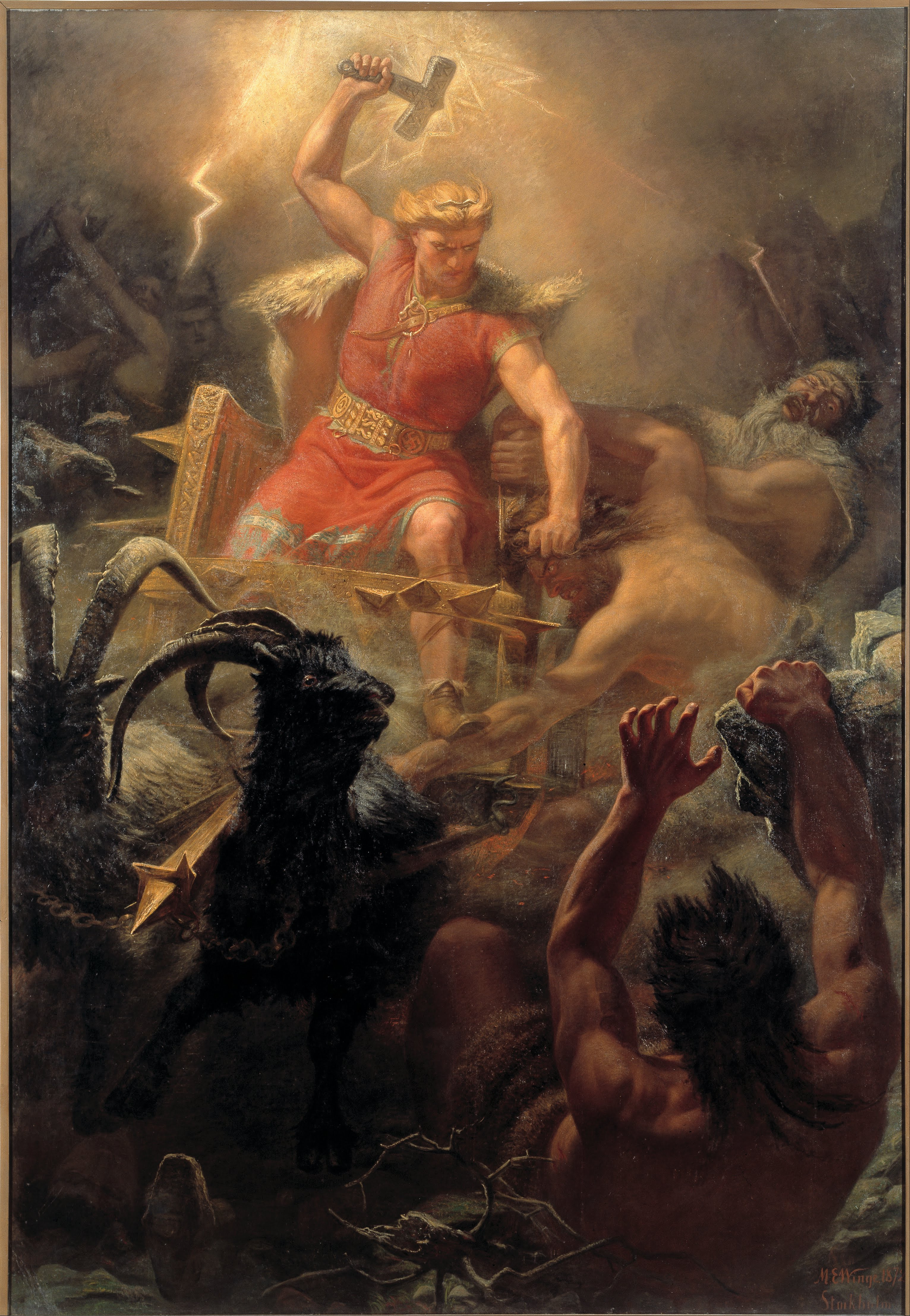
Thor, the son of Odin and Fjörgyn, was the god of thunder. Thor had red eyes and a red beard and was a loyal and dependable warrior and defender of Asgard, the Aesir’s stronghold. Although he was bad-tempered, he was known for his righteousness, healing powers, strength, and bravery. Thor was the strongest of all beings, and his unique apparel, including his belt of Megingjard and gloves, magnified his force.
However, the most important weapon associated with Thor is the Mjöllnir, the hammer crafted by dwarfs. The hammer’s name translates to lightning, alluding to Thor striking his hammer when slaying monsters and giants while riding his chariot drawn by Tanngniost and Tanngrisnir, two giant goats.
Thor was a sky god responsible for rain and was likewise the god of hallowing, fertility, and agriculture. Together with his golden-haired wife, Sif, they represented the greenness and fruitfulness of the lands.
Baldr

Baldr (Balder, Baldur) was the half-brother of Thor and the younger son of Frigg and Odin. He was called the god of light and purity in Aesir. The Norse people considered him as kind, gracious, divine, wise, and fair, and his beauty made even the flowers around him fail in comparison. His home was the most exquisite in Aesir, with embellished pillars and gilded silver components. Only the purest of hearts were allowed to enter his house. He owned the greatest ship ever built in the kingdom, the Hringhorni. Sadly, it was used as his funeral pyre after his tragic demise. His mother prayed to almost every living thing to protect the delicate Baldr but missed the mistletoe, something that Loki knew. Baldr was believed to be an immortal, but Loki tricked Höðr into throwing a dart made from mistletoe. Höðr, who was blind, was the twin brother of Baldr.
Vidar
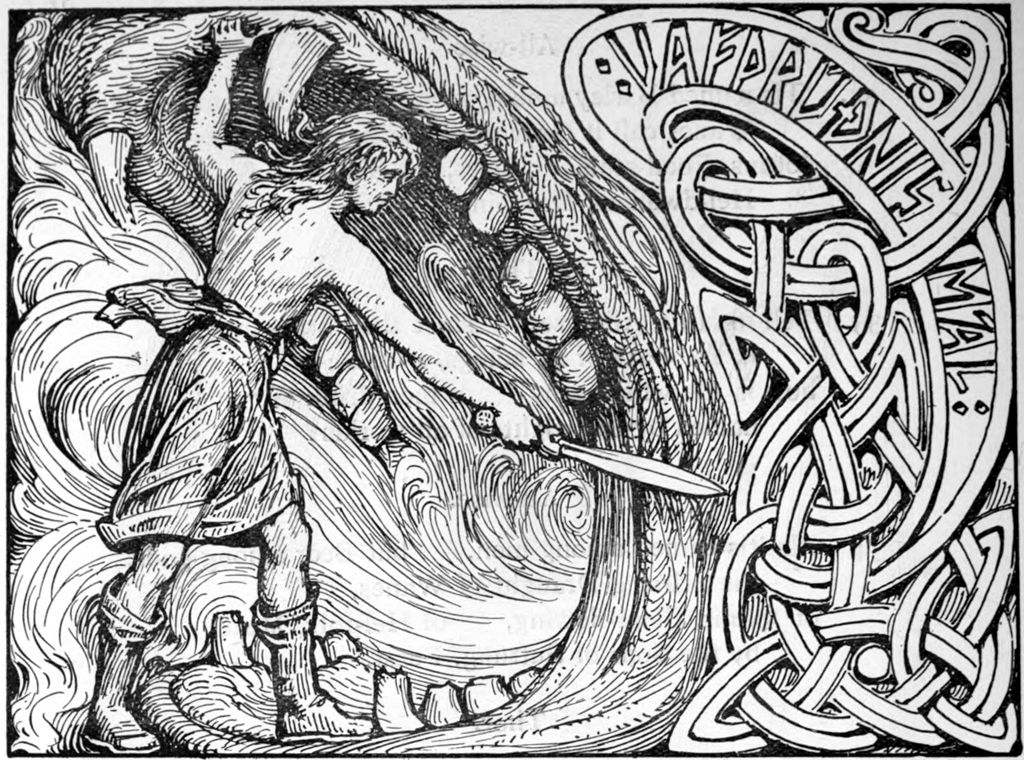
Vidar was another of Thor’s half-brothers. He was the son of Odin and the giant Gridr. According to the prophecy, he would survive the Ragnarok, the death of the gods. He was a talented swordsman and second to Thor in strength. Although not much was written about him, it was assumed that his attribute of silence stemmed from the fact that he did not say much, and likewise, the silence was one of the rituals performed by warriors before a war or vengeance. Vidar had special shoes, said to be made from scrap leather from all mankind. He always had scrap leather to repair his shoes, which he used to step on the lower jaw of Fenrir, a giant wolf and one of Loki’s sons, which swallowed Odin, causing him to die. Vidar ripped Fenrir’s jaws with his incredible strength to avenge Odin’s death.
Tyr
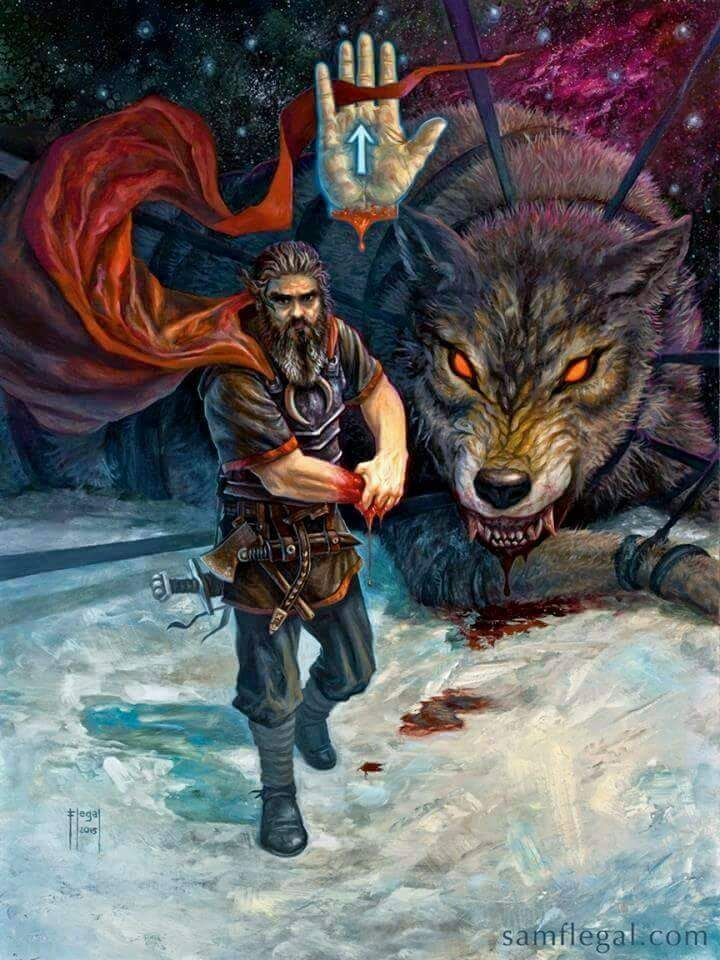
The bravest of all Viking gods was Tyr, the god of war and heroic glory. His origins are surrounded by mystery. Some say he was the son of Hymir, a giantess. Others say that he was also a son of Odin. He was once a Viking ruler who Odin replaced. He was associated with the formalities of conflict and treaties; thus, he was likewise called the god of oaths and justice. Tyr was depicted as having only one hand after Fenric, the giant wolf, bit off his other hand while he was trying to trap the beast.
Bragi

In Old Norse, Bragi means poet. Bragi was known as the skaldic god of poetry. Skaldic was one of the two types of poetry in Old Norse mythology. He was the poet of Valhalla, Odin’s magnificent hall. The Viking regarded Bragi as a skillful poet-god who sang and entertained the multitude of warriors (Einherjar) who died in battles and were brought to Valhalla by the Valkyries. He was endowed with wisdom, and was known for his skill with words and fluency of speech. Bragi is often depicted with a harp, which he used when entertaining the warriors and fallen heroes at Valhalla. He was the husband of Iðunn, a Norse goddess.
Idun
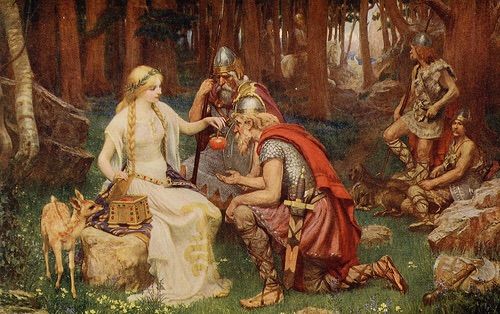
Idun (Iðunn) was a member of the Aesir tribe, making her a goddess. She was known as the goddess of spring and eternal youthfulness in Old Norse mythology. Her depictions showed a woman with long, luxurious, golden hair. She was the wife of Asgard’s court poet, Bragi.
According to the myths, Idun had latent powers. It was said that she was the keeper of magic fruits called epli (sometimes depicted as golden apples) that endowed immortality to those who ate them, as mentioned in various poems, such as Edda and Haustlöng. The gods must eat the magic fruit to preserve their youth and remain immortal.
Loki
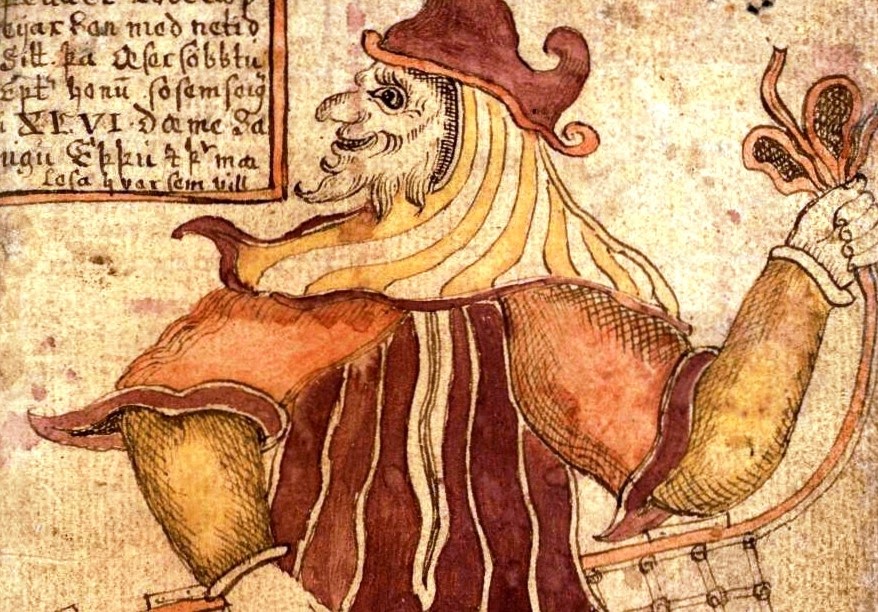
While most gods were benevolent, Loki was known as the trickster god. Loki was a jötunn or a supernatural being. He was the son of the giant and giantess Farbauti and Laufey. Loki was a shape shifter.
In most depictions, Loki was presented as a naughty god who was not entirely evil in his whimsical purposes but could be pretty scheming when performing cruel actions, most of which led to tragedies and misfortunes. Due to his diverse heritage, Loki was an outsider among the Aesir tribe. Technically, Loki was not a true god but was included among the Norse gods as an equal. However, he developed a complex relationship with the other Viking gods, especially Thor. According to predictions, Loki became responsible for the deaths of several Norse gods.
Hel

Hel, the ruler of the underworld, was the daughter of Loki and giantess Angrboda. Hel judged and decided the fate of the souls that entered the underworld or hell. She was shown as a partly decomposed being in most of her depictions. She had a face and body of a living woman but with a downcast and gloomy appearance. However, her thighs and legs were that of a corpse. Inside her realm, she was more powerful than Odin.
Heimdall

Asgard’s ever-vigilant guard, Heimdall, was a descendant of Fornjót, a giant. He was a grandson of Aegir, a sea jötunn. He possessed a horn called Gjallarhorn, which he used every time intruders approach Asgard.
Heimdall possessed keen eyesight, and he could see for hundreds of miles. He also had sensitive hearing and was said to hear the sound of wool growing on sheep. His other qualities included having foreknowledge. Moreover, Heimdall’s energy source was vast, allowing him to sleep for literally a few winks.
There was a vague reference in Völuspá, an Old Norse poem, saying that Heimdall was the father of humankind. There was a probability that most Vikings considered him the one who created the hierarchy and classes among men in history.
Njord
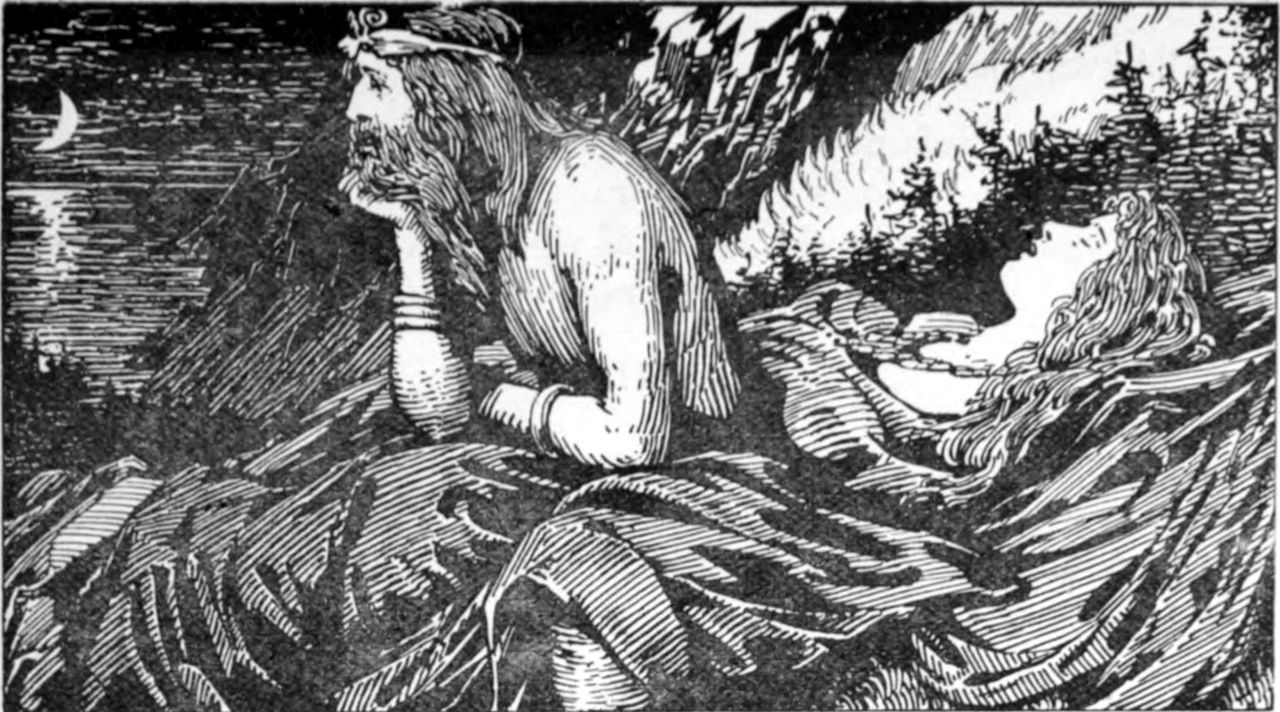
In Old Norse, there were two branches of god tribes, Aesir and Vanir. Njord, the god of seas, fertility, and wealth, belonged to the latter branch. However, he was accepted as Aesir’s honorary member after the end of the war between the two tribes. He was the seafaring Vikings’ primary deity, who regarded Njord as the richest divine being among the gods and goddesses of Norse mythology. According to a myth, Njord married Skadi, a frost giantess, who fell in love with the beautiful feet of the god. However, she thought that the feet belonged to Baldr.
Their married life was not blissful, as Njord preferred to live at Nóatún or The Place of Ships, while Skadi, spent most of her time in the snowy mountains where she had a house. They separated after Skadi gave birth to twins, Freyr and Freya.
Freyr
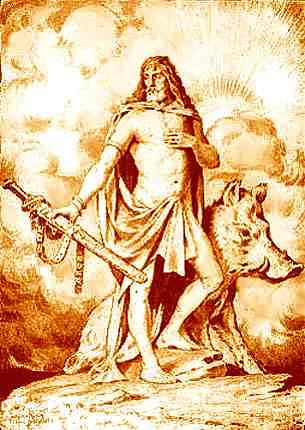
Freyr was one of the revered and beloved fertility gods of the Vikings. His depictions showed him with flowing hair and a muscular body. As a fertility deity, he covered both the ecological and sexual scopes, embodying virility, peach, wealth, and bountiful harvests. He was revered during harvest celebrations and marriage rites, and boars were often offered as a sacrifice to him. Freyr was known to ride a chariot pulled by boars.
Freya
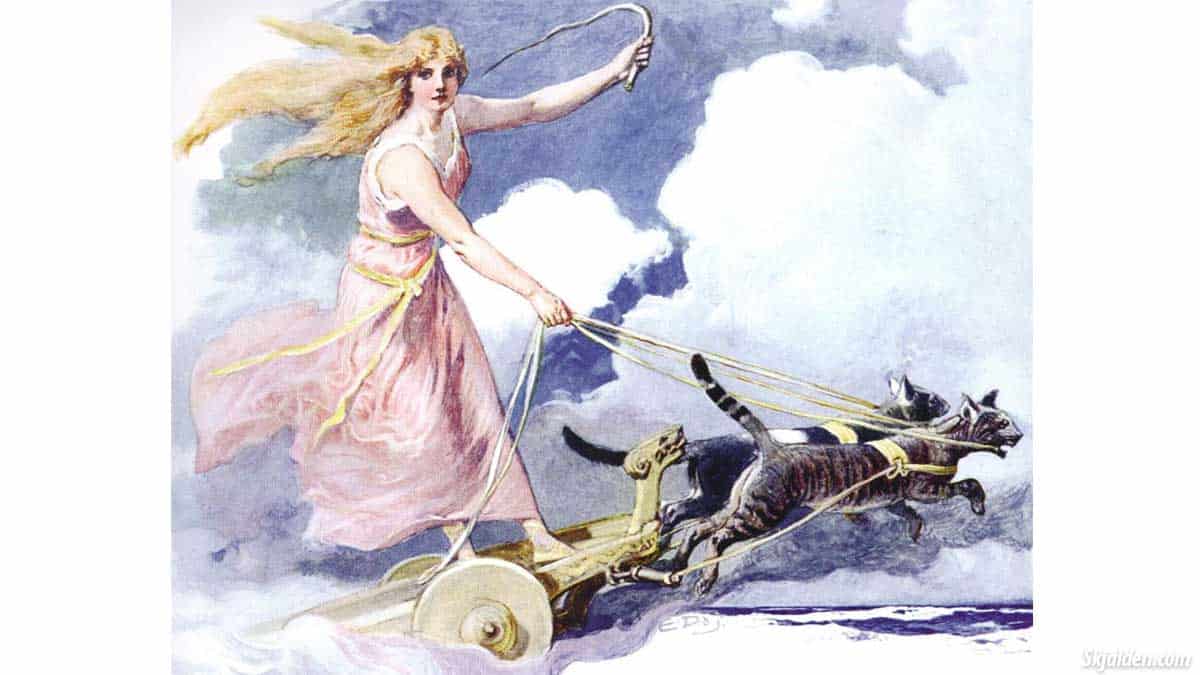
Freya, the twin sister of Freyr, was the goddess of fate and destiny. She was an honorary and loyal member of the Aesir, although she was from the Vanir tribe. She represented the aspects of opulent objects, beauty, and love and was often depicted as a seeker of the unknown and pleasure. Freya embodied the female seer of Nordic religion who could experiment with the magic (seidr) related to the weaving of destiny. Thus, she can alter and manipulate a person’s fortune and desire.